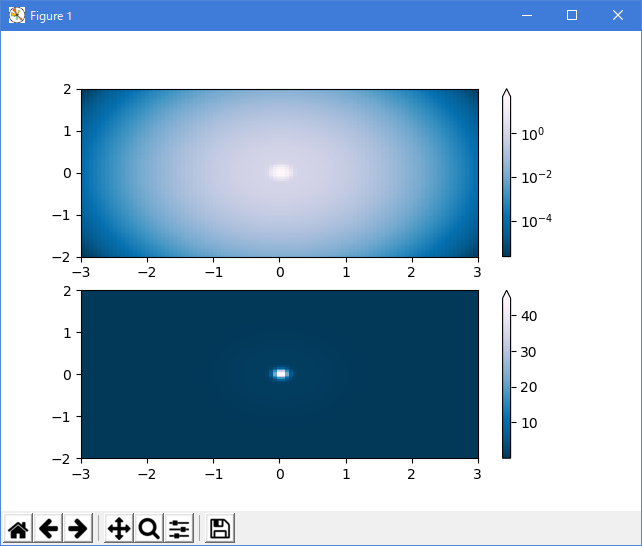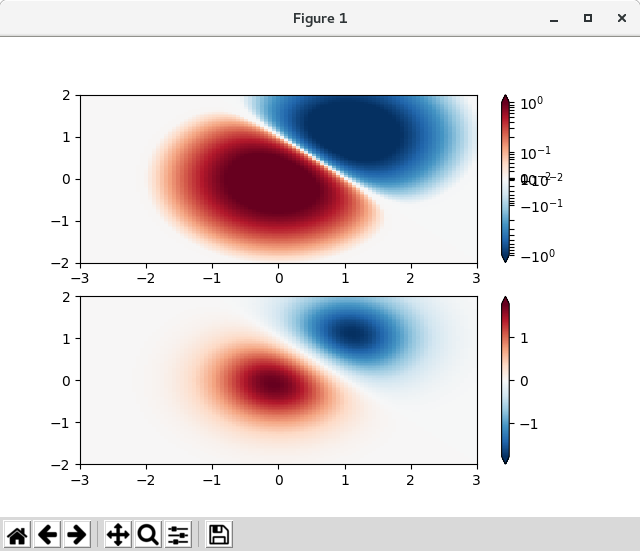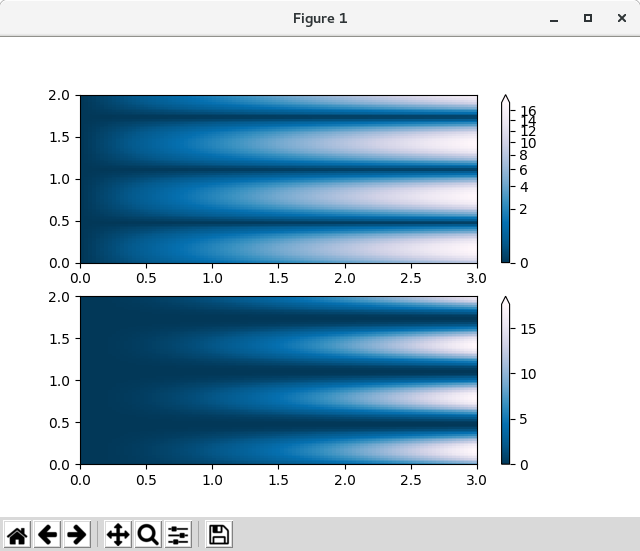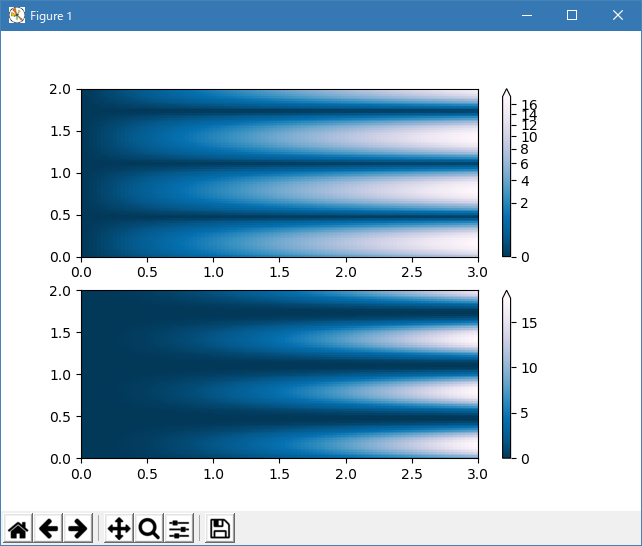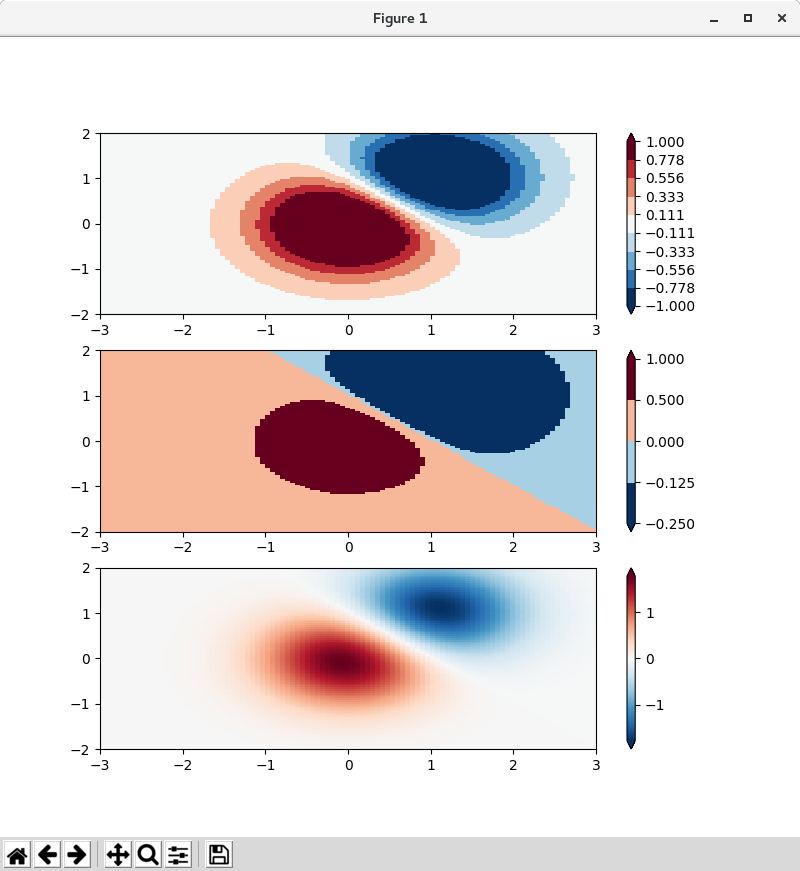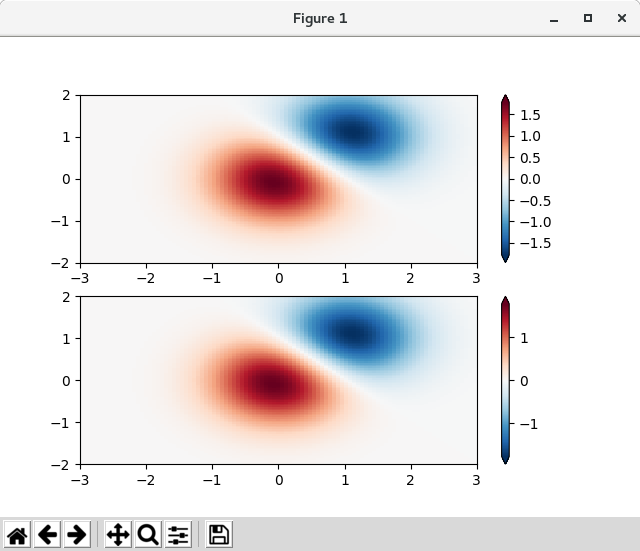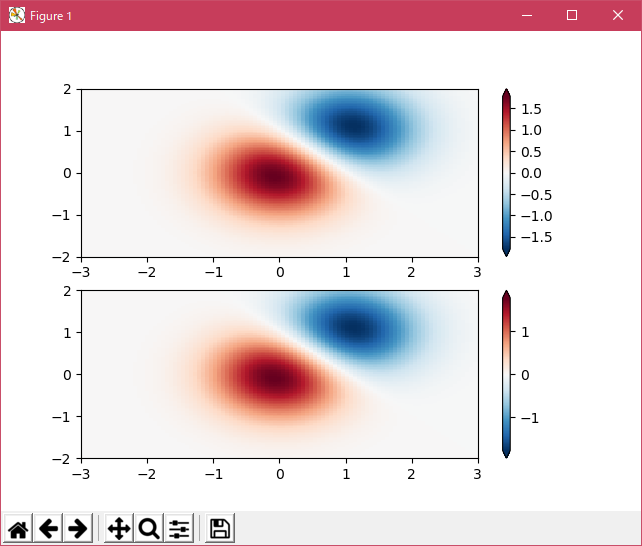|
matplotlib Colormap Normalization. |
H.Kamifuji . |
- 目 次
- Colormap Normalization
デフォルトでカラーマップを使用するオブジェクトは、カラーマップの色をデータ値vminからvmaxに直線的にマッピングします。 例えば:
pcm = ax.pcolormesh(x, y, Z, vmin=-1., vmax=1., cmap='RdBu_r')
Z のデータを-1から+1まで線形にマップするので、Z = 0 はカラーマップ RdBu_r (この場合は白)の中央に色を与えます。
Matplotlib はこのマッピングを2段階で行います。[0,1] からの正規化が最初に行われ、次にカラーマップのインデックスにマッピングされます。 正規化は matplotlib.colors() モジュールで定義されたクラスです。 デフォルトの線形正規化は matplotlib.colors.Normalize() です。
データをカラーにマッピングするアーティストは、引数 vminとvmax を渡して matplotlib.colors.Normalize() インスタンスを作成し、それを呼び出します。
In [1]: import matplotlib as mpl In [2]: norm = mpl.colors.Normalize(vmin=-1.,vmax=1.) In [3]: norm(0.) Out[3]: 0.5
ただし、データを非線形の方法でカラーマップにマップすると便利な場合があります。
- Logarithmic
- Symmetric logarithmic
- Power-law
- Discrete bounds
- Custom normalization: Two linear ranges
- 参照ページ
Colormap Normalization
- リリースノート
- 2023/03/11 Ver=1.03 Python 3.11.2 で確認
- 2020/10/28 Ver=1.01 Python 3.7.8 で確認
- 2018/11/08 Ver=1.01 初版リリース
- 関連ページ

